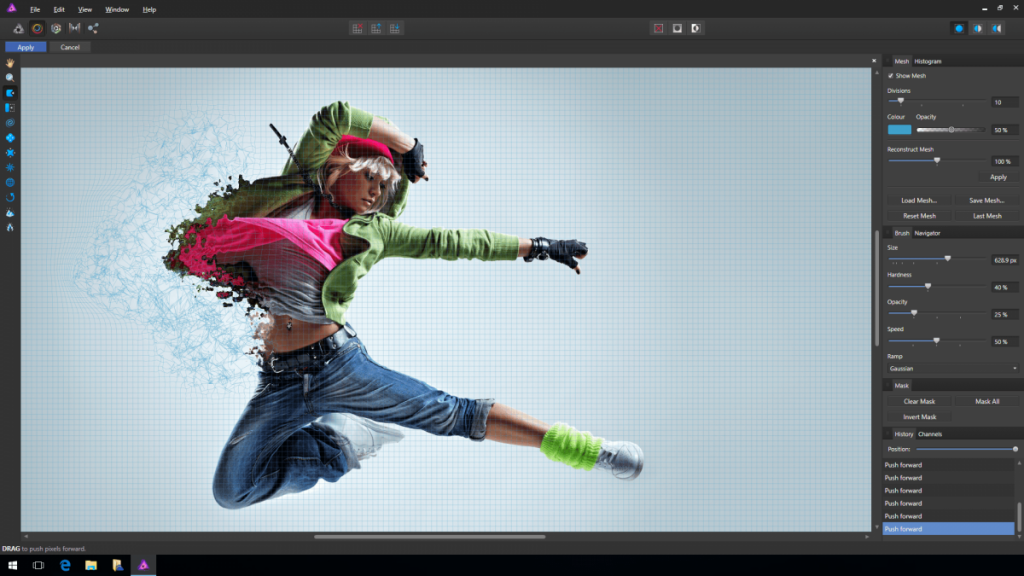Boost eCommerce Sales Using These 5 Research-Backed Principles
Did you know that 99 percent of people who visit your eCommerce store won’t buy on their first visit and that many won’t return again after that? Or did you know that for every $92 spent on attracting visitors, the average online business spends just $1 on converting them? These statistics and people’s ignorance on how to boost conversions, explain why many eCommerce businesses struggle.
You don’t need specialized knowledge to boost sales on your eCommerce store. Likewise, you don’t need to fork out money to pay conversion experts. Instead, these simple — really, super simple — tips that are grounded in research, will boost sales on your eCommerce store significantly.
Attune Your Usage of Color to Your Demographics
From a design perspective, we tend to underestimate the role that color plays on conversion rates. For many people, the choice of what color to use in their products and design is left to personal preference and desire, when in reality using the right color combinations can boost sales.
According to a study that analyzed 100 brands and studied 450 non-color blind participants, it has been proven that color can influence the likability and familiarity of people to feel toward a brand. Another study that observed the role that color played in marketing and decision-making found that people make up their minds within 90 seconds of interacting with people or products, and that up to 90 percent of their assessment is influenced by colors.
What’s more important to note, however, is that the colors that work best for men might not be welcomed by women — so it is important to attune your colors to your demographics. Colors can also influence how your brand is perceived, and as a result boost sales — a good example of a company that gets color right is Cadbury, who successfully uses the purple color to communicate luxury. You can use the color blue to communicate trust and integrity; Facebook and Twitter are major examples of companies that use this color.
Research has shown that both male and female are more likely to prefer the color blue, but while women largely favor the color purple, it won’t work with an audience of men. The graph below shows color preference for both men and women.

Image credit: Helpscout
Anchor Your Offer for Easy Comparison
Often times you try to shop on Amazon and see something like this:

To the untrained eye, there’s nothing special about the above listing. However, take a look at the “List Price” and the “Price” and you’ll notice a difference — including a “list price” creates the impression that you’re getting a bargain, because the main price is automatically anchored to it. What’s especially surprising is that the very same laptop costs $179.99 on Target.com (Yes, it’s cheaper!), yet research points to the fact that the Amazon listing is likely to result in more sales. Why? Anchoring!
Often times, when we want to make a decision, we try to look for a reference point — an anchor — that we can use to judge our decision. In this case, by showing people a list price of “$199.99” and an actual price of “$184.86,” people feel that they are getting a discount and rush to buy — in reality, however, the product is much cheaper elsewhere. By introducing the “list price” option, Amazon is making it the “anchor” instead of having people anchor the product based on the price of their competitors.
Anchoring is a very powerful technique, and if used correctly, it can powerfully boost your ecommerce sales.
Use Security and Trust Seals
Often, the decision of many people not to buy from you has nothing to do with the quality of your products or the persuasiveness of your copy. It’s a trust issue, and this often poses a serious problem compared to others.
If people don’t trust you, they will never buy from you. There’s nothing you can do about that.
According to a study conducted by Econsultancy/Toluna, 48 percent of people are wary of performing online transactions on sites without a trust seal. This makes sense, especially when you consider how often major websites are hacked these days.
If you have no trust seal on your website, add one and you’ll notice a dramatic increase in sales.
Besides using a trust seal, you can also make people trust you more by using testimonials, featuring customer reviews (both positive and negative), having an about page and having your phone number displayed prominently on your website.
Start a Blog
I’m actively involved in the Website Setup project, where we teach people how to set up a blog (for good reasons!), so I can’t resist including this. And this is for two key reasons:
- 99 percent of people won’t buy on their first visit to your site. Blogging serves as a means to educate, inform and keep your products in the mind of people who choose not to buy immediately.
- Businesses that blog generate 67 percent more leads than businesses that do not blog. They also experience better search engine rankings, better bonding with users, and are able to more easily inform users about the benefit of their products — all these contribute to more sales.
If you don’t have a blog for your ecommerce store yet, starting one will most certainly boost sales. However, your approach needs to be a bit different from the traditional “blogging” approach. Here are some tips:
- Capitalize on product reviews: due to a blog’s ability to easily rank in the search engines, creating product reviews and publishing them on your blog will ensure better rankings for your product reviews, eventually generating more sales.
- Do comparisons: Do you have an eCommerce store that sells computers? If yes, a simple comparison of “Apple vs Mac computers” on your eCommerce blog can be a great sales driver. People will tend to refer to these comparisons, and it will also rank in search engines. By linking to the products you compare in your store, you’re more likely to experience a sales boost.
- Publish more content: Statistics show that businesses that publish 16 or more blog posts monthly get the most results from blogging — in fact, they get 3.5 times more traffic, and as a result, a lot more sales than businesses that publish less than four blog posts monthly. As an e-commerce store, the volume of content published could be one of your biggest assets.
Limit Choices
As an eCommerce store with hundreds or even thousands of products, it sounds like the best thing to do is showcase relevant products to people at every stage of the buying process. However, research shows that this isn’t effective. In a study conducted at an upscale supermarket, psychologists Sheena Iyengar and Mark Lepper found that limiting choices displayed to people from 24 varieties of items to just six varieties was able to boost sales by up to 10 times.
If you have a store with a lot of different variety of products, where it is virtually impossible to limit choices, you can still capitalize on the fact that limited choices boost sales by doing the following:
- Feature your most popular products: What are the five most purchased product in a particular category on your eCommerce store? Showcase these products in a special section and make it easy for users to find them; instead of being confused with possibly thousands of products, they easily see what resonates with others.
- Feature products with the most reviews: By featuring products with the most reviews, you let users decide. Even if there are a thousand products in a certain category, reviews show people which ones people like best. This allows you to use a combo of social proof and limited choices (in terms of what other people think is best) to boost sales.
Showcase your top picks: Sometimes, maybe you feel certain products will do better than others due to some other information you have. Showcase these products in a special section for every category; include no more than three to six products as top picks.
Conclusion
There are many ways to boost eCommerce sales – whether it is through the right use of color to communicate a message about your brand or by using elements of trust to get more people to buy from you. Hopefully, the above tips help you boost eCommerce sales.
Read More at Boost eCommerce Sales Using These 5 Research-Backed Principles



















